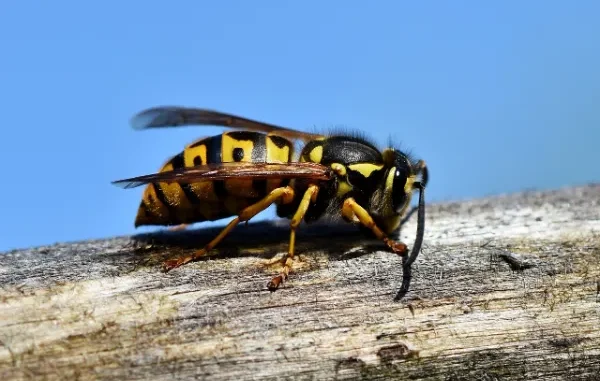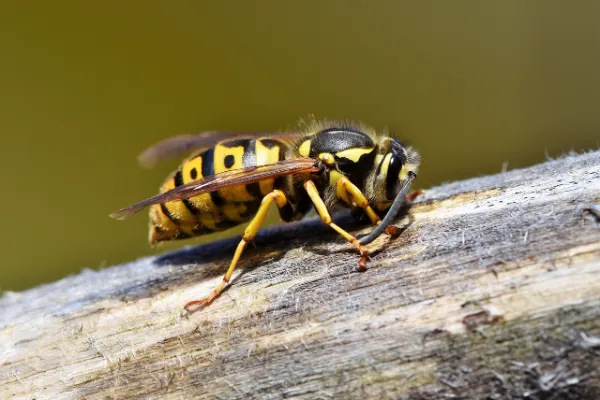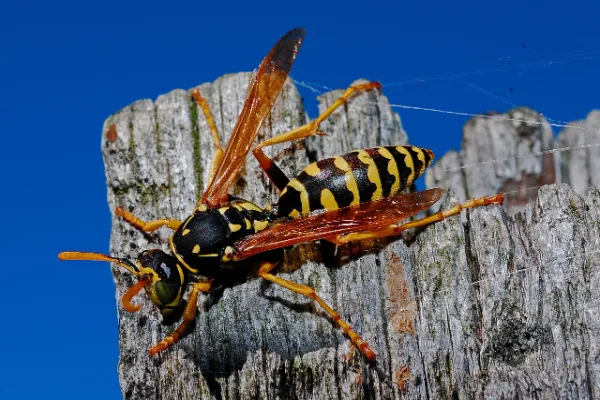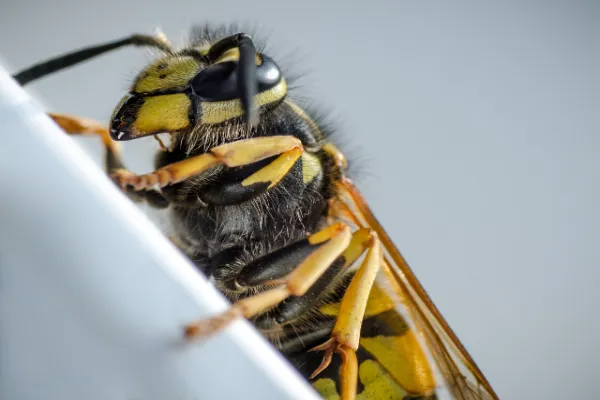
Wasps elicit fear in people. These airborne insects are known for their black and yellow patterns, formidable stingers, and the buzzing noise they produce. Nevertheless, there is information about these insects that goes beyond initial impressions. From their complex social hierarchies to their contributions within ecosystems, there are many aspects of wasps that warrant thorough examination. We uncover the interesting facts about wasps and explain their distinctive behaviors and characteristics.
The Surprising Benefits of Wasps: 5 Reasons Why They Are Actually Good for the Environment
Wasps, despite being feared and misunderstood, have a role in preserving environmental balance. Discover five unexpected advantages of these insects.
Pest Control: Wasps are natural predators that consume a variety of insects, including caterpillars, flies, and aphids. By regulating the population of these pests, wasps assist in safeguarding crops and gardens from harm, thereby reducing the reliance on harmful pesticides.
Pollination: Although bees are commonly recognized as the primary pollinators, wasps also contribute to the pollination of plants. Certain species of wasps visit flowers in search of nectar, unintentionally transferring pollen from one plant to another.
Decomposition: Some species of wasps act as scavengers, feeding on deceased insects and organic matter. Through the breakdown of decaying substances, wasps aid in recycling nutrients back into the soil, thereby promoting the overall health of ecosystems.
Parasitoid Behavior: Parasitoid wasps lay their eggs inside other insects, such as caterpillars or aphids, which serve as hosts for their offspring. This behavior effectively controls the population of pest insects and serves as an efficient biological control method in agriculture.
Ecological Balance: Wasps play a crucial role in the food chain, serving as prey for birds, reptiles, and other insects. Their presence contributes to the maintenance of ecological balance and enhances biodiversity.
5 Interesting Facts About Wasps’ Social Structure of Wasp Colonies
Wasp colonies function as highly organized societies, characterized by a strict social hierarchy. The colony consists of a queen, workers, and drones, each fulfilling specific roles crucial to the community’s operation. The queen holds the utmost importance within the colony, as she is responsible for laying eggs and ensuring the colony’s survival.

Workers, on the other hand, are tasked with constructing and maintaining the nest, gathering food, and caring for the queen’s offspring. Drones, exclusively male wasps, have the sole purpose of mating with the queen. Effective communication is vital in wasp colonies to coordinate activities and maintain order. Wasps employ various signals, including pheromones and vibrations, to convey essential information about food sources, threats, and mating opportunities to one another.
Members of wasp colonies exhibit a remarkable level of cooperation and altruism. Workers are willing to sacrifice their own safety to protect the queen and her offspring, and they even share food with other colony members during times of scarcity. Despite their well-structured social system, wasp colonies are not permanent. In temperate regions, colonies typically endure for only one season. As autumn arrives, the queen and drones perish, while new queens hibernate until the following spring to establish fresh colonies.
The Incredible Diversity of Wasps: 5 Types You Didn’t Know Existed
Wasps are a group of insects that are important to ecosystems globally. Despite the common yellow jacket or paper wasp being well-known, there are many lesser-known species. Here are five types of wasps that might be unfamiliar to you:
Orchid Wasps: These wasps possess a unique symbiotic relationship with orchids, utilizing their specialized mouthparts to extract nectar from the flowers. In return, they play a crucial role in pollinating the orchids, making them an integral part of the ecosystem.
Velvet Ants: Despite their name, velvet ants are actually a species of wingless wasps. They exhibit a remarkable appearance, adorned with vibrant red or orange coloration and a dense covering of fine hairs. Velvet ants are notorious for their painful sting, earning them the moniker “cow killer.”
Cuckoo Wasps: These parasitic wasps lay their eggs in the nests of other bees and wasps, where their larvae consume the provisions left by the host. Cuckoo wasps are recognized for their metallic hues, ranging from brilliant blue to iridescent green.
Gall Wasps: Gall wasps derive their name from the distinct galls, or abnormal growths, that they induce on plants. These galls serve as nourishment and shelter for the developing larvae, which eventually emerge as adult wasps. Gall wasps play a significant role in shaping plant communities and can be found in a diverse range of habitats.
Ensign Wasps: Ensign wasps are small, parasitic insects that prey on cockroach eggs. They are named after their unique posture, with their elongated, curved abdomen held high in the air resembling a flag. Ensign wasps are beneficial to humans as they assist in controlling cockroach populations in homes and other structures.
There is a wide variety of wasps in the world, each with its role in the ecosystem, even if some are not as famous as others.
Wasp Venom: 5 Surprising Ways Scientists Are Using It for Medical Research
Wasp venom, a powerful blend of proteins and peptides, has instilled fear due to its capacity to inflict painful stings. Nevertheless, recent studies have uncovered the potential of this venom to revolutionize medical treatments. Discover below five unexpected methods through which scientists are using the potency of wasp venom in their research.

Pain management: Researchers are exploring the analgesic properties of compounds found in wasp venom to develop more effective and safer pain medications than current options.
Anticancer potential: Some components of wasp venom show promise in fighting cancer cells, sparking interest in developing them as innovative cancer treatments that can target tumors while sparing healthy tissues.
Antimicrobial benefits: Peptides in wasp venom with antimicrobial properties are being studied for their potential in combating antibiotic-resistant bacteria, with the goal of creating new antibiotics to fight drug-resistant infections.
Anti-inflammatory properties: Certain proteins in wasp venom have anti-inflammatory effects that could be beneficial for conditions like arthritis, leading scientists to develop new anti-inflammatory drugs with improved efficacy.
Neuroprotective effects: Research suggests that components of wasp venom may offer neuroprotection by shielding nerve cells from damage, prompting investigations into their potential for treating neurodegenerative diseases such as Alzheimer’s and Parkinson’s.
In general, the array of bioactive compounds present in wasp venom shows significant potential for creating novel medical remedies. Scientists are uncovering various possible uses for this natural substance, leading to groundbreaking therapies that may enhance the well-being of individuals dealing with different health issues.
Buzzworthy Behavior: 5 Strange and Intriguing Habits of Wasps
Wasps exhibit behaviors that can appear peculiar to those who observe them. Here are five of their most remarkable habits.
Nest Building: Wasps are renowned for their impressive skills in constructing intricate nests. By combining wood fibers with saliva, they create papery nests with hexagonal cells for their eggs and larvae. These nests can be found underground, in trees, or even on buildings.
Social Structure: Unlike bees, wasps have a more flexible social structure without a strict hierarchy. Most wasp species are solitary, with each female building and tending to her own nest. However, certain species like yellow jackets and hornets live in colonies with a queen and worker wasps.
Hunting Behavior: As predators, wasps play a vital role in controlling insect populations. They exhibit remarkable hunting behavior, capturing and paralyzing insects to feed their larvae. Some species even display a unique “zombie” behavior, laying eggs inside living caterpillars or spiders, which act as hosts for the developing larvae.
Communication: Wasps communicate through various signals, including visual cues and pheromones, to convey information about food sources, nest locations, and potential threats. This enables them to coordinate their activities and effectively defend their nests.
Defensive Tactics: Equipped with stingers, wasps use them for defense against predators or perceived threats. Unlike bees, they can sting multiple times without dying. Certain species are known for their aggressive behavior and may swarm and attack in large numbers if their nest is disturbed.
In conclusion, the fascinating habits and behaviors of wasps make them an intriguing subject for study. Despite their sometimes intimidating reputation, these insects play a role in ecosystems and have developed strategies for survival and reproduction.
Interesting Facts About Wasps: 10 Fascinating Insights
Wasps are often misunderstood insects, known for their aggressive behavior. However, there is much more to these insects than meets the eye. Here are ten interesting facts about wasps that might surprise you:

- Diverse Wasp Species: There are over 30,000 different wasp species worldwide, ranging from social species like yellow jackets and hornets to solitary ones like sand wasps and fairy wasps.
- Varied Living Arrangements: While some wasp species live in hives, others prefer solitary lifestyles. Social wasps protect nests with stingers, while solitary wasps use theirs for hunting.
- Predatory Behavior: Wasps are omnivores and feed on pollen, nectar, and other insects like caterpillars and flies, making them beneficial for controlling pest populations.
- Multiple Stings: Unlike bees, female wasps can sting multiple times as they do not die after stinging once.
- Nest Construction: Wasps build nests using materials like wood fibers or mud, creating intricate structures depending on the species.
- Hairless Bodies: Unlike bees, wasps do not have hair and have a distinct narrow waist called a petiole.
- Asian Giant Hornet: The Asian giant hornet is the world’s largest wasp with impressive dimensions and a formidable reputation.
- Male Lifecycle: Male wasps die after mating with special females who will establish new hives.
- Pheromone Communication: Wasps use scent to communicate, releasing pheromones upon death that can trigger aggression in other wasps.
- Colorful Varieties: While black and yellow are common colors, wasps come in a wide range of hues, with some species capable of color changes based on temperature.
Leave a Reply